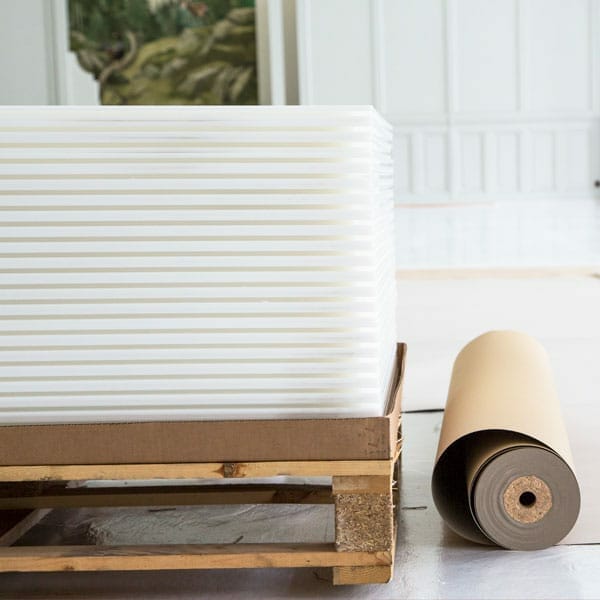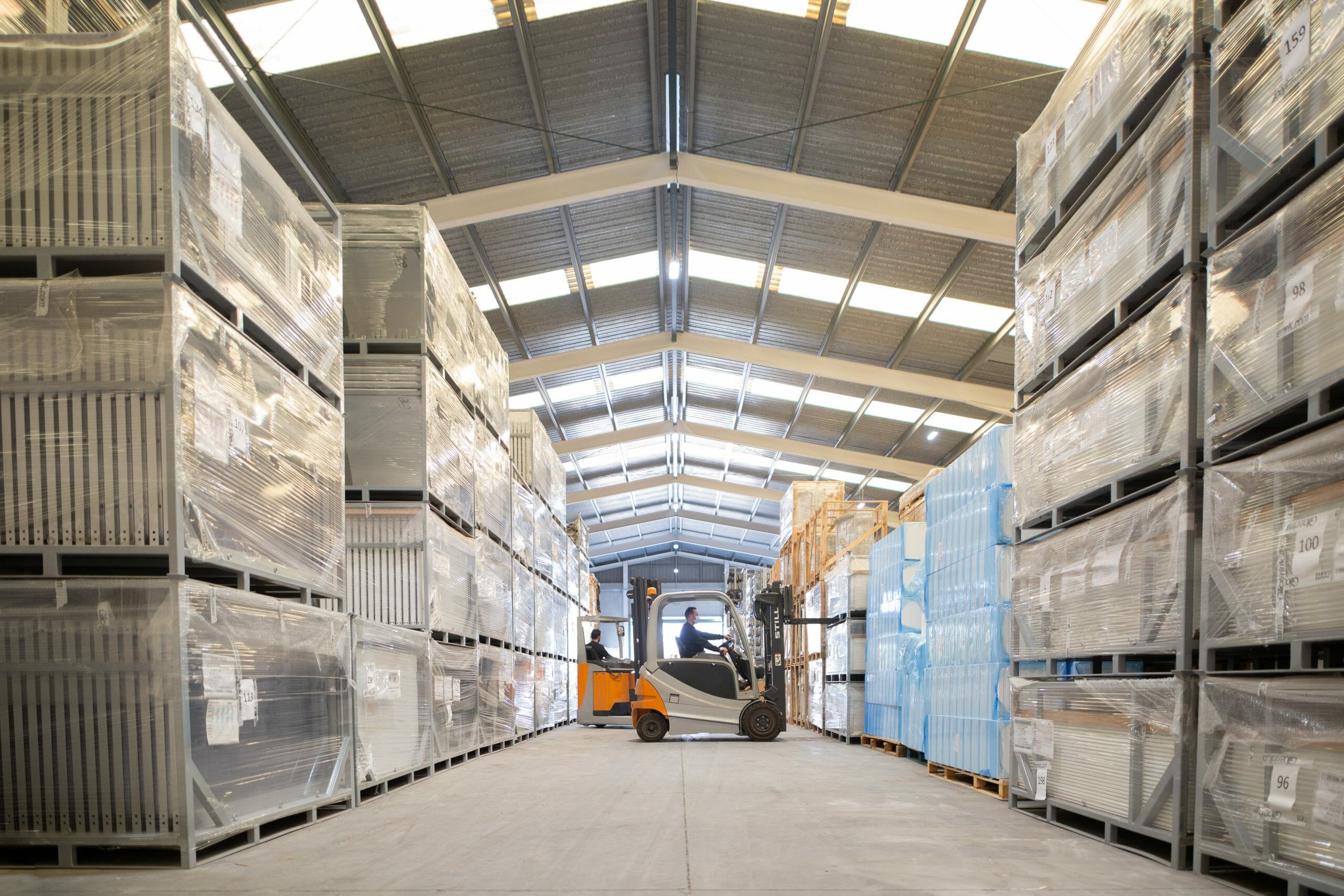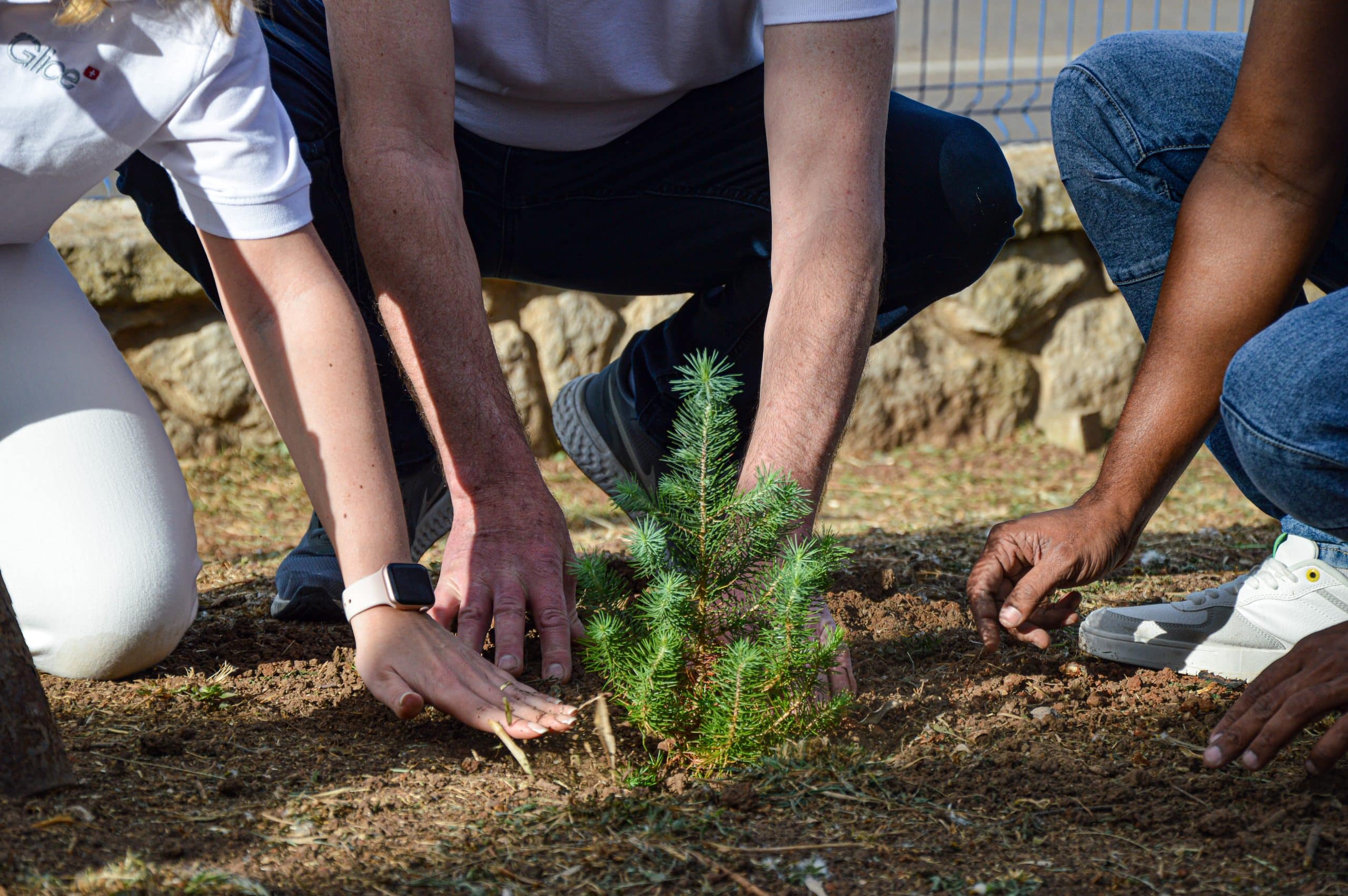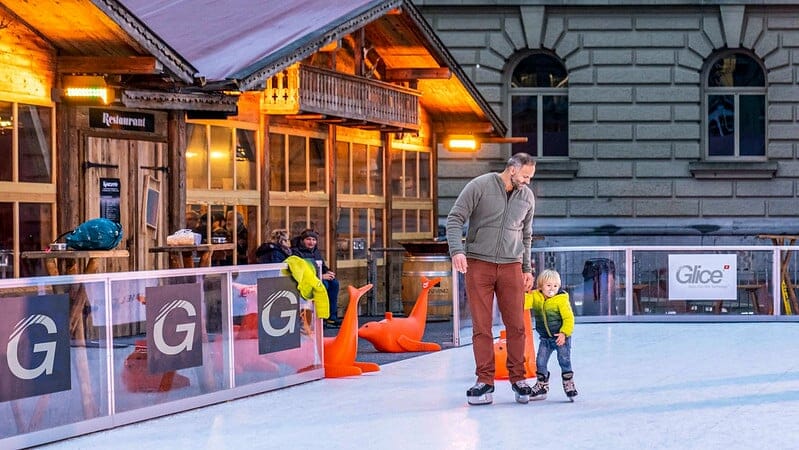Every day, we face the challenges and possible consequences of climate change and plastic pollution and what we can do to keep these at a minimum. Across all industries, it has become an issue impossible to ignore. Also, the sports industry has to rethink its ways of adapting to more challenging circumstances.
Amid winter activities, synthetic ice has emerged as a promising alternative to electricity-powered ice rinks. However, there are still some concerns about the environmental impact of artificial ice, particularly regarding microplastics and carbon footprint. In this blog, we will explore what are synthetic ice shavings, look into the materials used in fake ice rinks, and discuss the strides made toward sustainability in the artificial ice business.
Synthetic Ice is made to simulate the glide and feel of refrigerated ice and is also known as fake or artificial ice. It is produced with a specially formulated polymer and uses lubricants to create a surface that gets close to the characteristics as that of traditional ice. Through careful engineering, the materials ensure a smooth skating experience with minimum friction.
What Material Is Synthetic Ice Made Of?

The material is what marks the difference between the different synthetic ice manufacturers. Glice synthetic ice is made of a high molecular weight polyethylene Its main characteristics are its long durability and reduced wear, which make it ideal for use as synthetic ice. Thanks to a carefully engineered manufacturing process, Glice’s artificial ice releases significantly fewer shavings than other comparable products.
Proportion of recycled polyethylene
Unfortunately, to ensure an optimal gliding experience, the polymers must be absolutely pure. As of right now it is therefore not possible to use recycled PE in our panels. However, we continuously work on improving our processes to be more environmentally friendly and have started testing panels using various recycled materials. It is important to us that our panels can be reused or recycled after the end of their life cycle, which is why we have established a partnership with Habitat for Humanity. The NGO utilizes our panels as a construction material and to build shelters for refugees.
Microplastics and environmental impact

There is a concern about microplastics that arise from the use of synthetic ice. We understand the worry about plastic articles being emitted into the environment and take this issue very seriously. While the amount of microplastics generated by synthetic ice is considerably lower than that of other plastic-based products, it is an issue that needs to be taken into consideration.
What we do against microplastics
Microplastics are defined as tiny plastic particles with a size of up to 5mm (0.2 inches) in diameter. As blades slice through synthetic ice, they generate shavings, often in the form of larger threads.
Regardless of their size, we take plastic abrasion very seriously. Glice has invested in extensive research to develop a technology that minimizes abrasion. Thanks to an extremely low coefficient of friction, Glice rinks produce 90% less abrasion than conventional synthetic ice rinks. On a standard rink, only 2.0 grams (0.1 ounces) are released per square meter per month.
To put this in perspective, a skating session (1h) produces 5 times fewer shavings than the average amount of microplastics produced by someone’s shoe soles in a day and 21 times fewer microplastics than the average car tires produce in a day. Additionally, studies show that microplastics are made of 35% synthetic textiles, 28% tire abrasion, and 24% city dust.
Contrary to shoe soles, car tires, and other forms of everyday microplastics, which can often be airborne, Glice shavings stick to the surface. This is thanks to our surface treatment our unique care solution (Glice Care) which ensures that abrasion remains on the surface instead of being released into the air. That way, they can be absorbed and removed with the daily cleaning process.
Regular cleaning of the ice panels following our guidelines ensures easy removal of abrasion particles. These particles are typically carried away in the cleaning water, which is later processed in each town’s sewage treatment plant using ultrafiltration. This widely used filtration system employs porous ceramic or plastic tubes with a pore diameter of around 0.01 – 0.05 micrometers, effectively trapping contaminants as small as 0.05 microns (Scherge, 2023, p. 47).
While these facts certainly enhance our skating enjoyment, our commitment doesn’t end here. We are continually researching ways to reduce abrasion and prevent its release into our environment. One of our developments is our dasher board system, designed to keep all abrasions inside the rink.
Carbon Footprint and What to Take into Consideration

While the production, transportation, and maintenance of synthetic ice require energy and resources, synthetic ice offers several benefits that help offset its carbon footprint. Artificial ice, as opposed to traditional ice rinks, works without refrigeration systems and, that way brings energy consumption to a minimum. Moreover, synthetic ice can be reutilized, eliminating the need for constant water replenishment and reducing water consumption. Have a look at the numbers:
Energy and CO2
Traditional ice rinks consume a significant amount of energy, with each square meter requiring up to 840 kWh per year. This results in an average CO2 emission of approximately 285 Kg (depending on the energy source) per year. In contrast, Glice synthetic ice requires no electricity for operation, resulting in a zero carbon footprint.
Water
Conventional refrigerated ice rinks have a high water demand, utilizing up to 50 liters of water per square meter per month. On the other hand, a Glice rink only requires water for maintenance purposes, significantly reducing water consumption.
Coolant
Natural ice rinks rely on coolants, using approximately 1.8 liters of coolant per square meter. These coolants often contain chemical pollutants, and the risk of leakage cannot be completely eliminated. Glice, on the other hand, operates without the need for coolants, eliminating the associated environmental concerns.
Production of Glice Rinks
 At Glice, we are committed to minimizing energy consumption and CO2 emissions in our manufacturing process. Through continuous research and development, we strive to enhance energy efficiency. Additionally, we employ renewable energy sources and natural gas in our factories to further reduce our environmental impact.
At Glice, we are committed to minimizing energy consumption and CO2 emissions in our manufacturing process. Through continuous research and development, we strive to enhance energy efficiency. Additionally, we employ renewable energy sources and natural gas in our factories to further reduce our environmental impact.
State-of-the-Art production facilities
To ensure the utmost eco-friendliness, our production facilities adhere to stringent sustainability standards. Our roofs are generously covered with solar panels, a renewable energy source that is continuously expanding to enhance efficiency. We proudly employ self-produced heat to warm the entire site, minimizing our carbon footprint. The facility is designed with superior insulation for optimal energy conservation. All our machinery, featuring advanced Eco-Mode capabilities, is meticulously chosen to support sustainable production. These efforts represent only a fraction of our vigilant commitment to meeting and surpassing our own eco-conscious standards as we constantly strive for improvement and progress in this regard.
Comparison to conventional electricity-powered ice
Let’s compare the emissions of our production process to those of a natural ice rink.
The production of a single Glice panel, which boasts an impressive lifespan of approximately 20 years, results in only about 30.96 Kg of CO2 emissions. This corresponds to an average of 15.48 Kg CO2 per square meter. In contrast, the production of traditional artificial ice rinks, depending on the materials used, generates significantly higher CO2 emissions.
For comparison, the energy required to maintain conventional refrigerated ice rinks for less than three weeks matches the CO2 output of a Glice surface over its entire 20-year lifespan.
The disparity becomes even more apparent when considering the cooling systems used in traditional ice rinks. The production of an aluminum cooling system for such rinks consumes approximately 280 times more energy than producing a Glice surface of the same size. Additionally, the complex and expensive cooling machines required for refrigerated rinks contribute further to their carbon footprint.
Embracing Sustainability

At Glice, we go beyond providing an ecological technology for sustainable skating. Our commitment extends to a comprehensive Corporate Social Responsibility (CSR) program aimed at making a positive impact on the environment.
As part of our CSR initiative “Skate for the Planet“, we have established a long-term partnership with Eden Reforestation Projects, a renowned non-profit organization dedicated to reforestation and climate justice.
Planting One Tree With Every Panel
For every Glice panel produced, we plant one tree through Eden Reforestation Projects. These trees capture a minimum of 200 Kg of CO2, helping to neutralize our company-wide carbon footprint. This encompasses all areas of our operations, including production, logistics, waste management, and employee travel. By supporting reforestation efforts, we not only offset our emissions but also contribute to global reforestation projects. As of this day, 100,000 trees have been planted with our help.

Building Shelter
In response to the struggles refugees and low-income communities face, we also decided to work with Habitat for Humanity on a unique project that makes use of our defective and end of their lifespan panels. These panels are collected and used for housing opportunities in different parts of the world. Find out more about the ecological life cycle of our panels here.
With our CSR program and partnerships, we are dedicated to making a meaningful difference in the fight against climate change and social injustice. We believe that sustainability goes hand in hand with our commitment to providing exceptional skating experiences while preserving our planet and making it a long-lasting home for everyone.
Conclusion

We recognize the importance of sustainability amidst growing concerns about microplastics and carbon emissions. While we look towards a greener future, the solution is not to prohibit but to reinvent the ways we live and do things. Through the adoption of eco-friendly materials, innovative manufacturing methods, and a focus on circular economy principles, we are actively working towards more environmental-friendly practices. As the industry continues to evolve, we can anticipate further advancements that prioritize sustainability, ensuring that future generations can continue to enjoy the thrill of ice skating while safeguarding our planet.
Sources:
Scherge, M (2023): Nachhaltigkeit im Wintersport – Die tribologische Perspektive. Open Access Journal, 43-48

